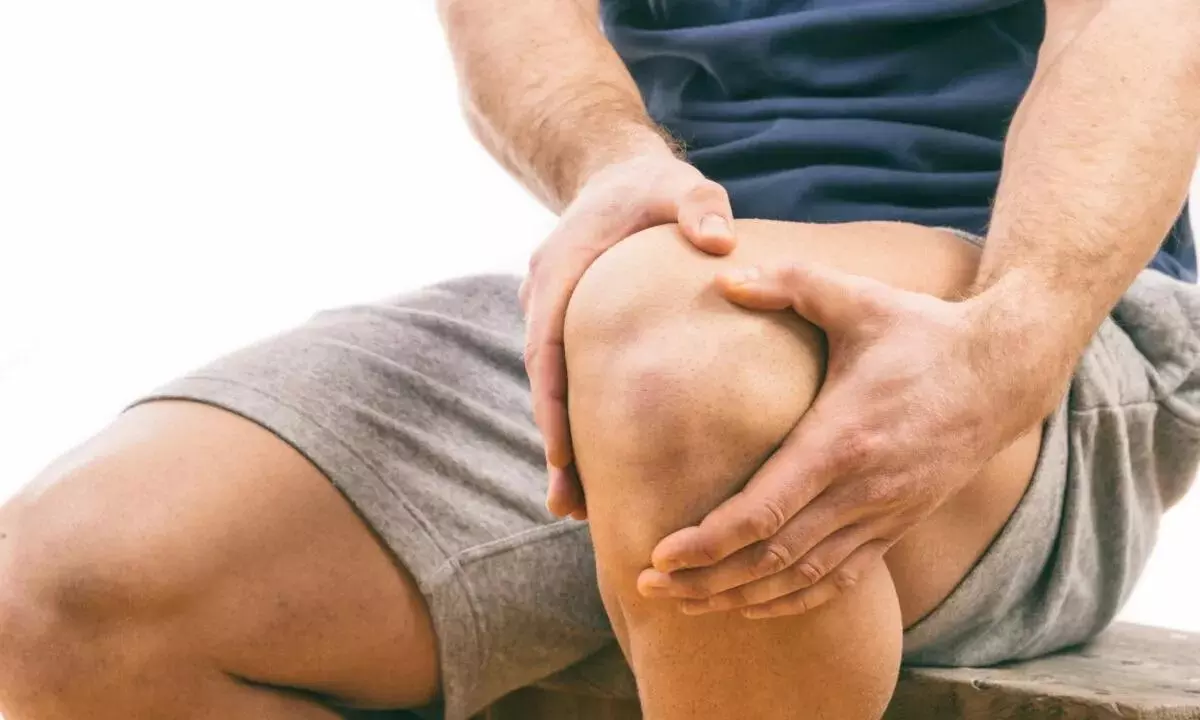
Recently, Bollywood actress Madhuri Dixit’s husband, Dr Shriram Nene, a cardiothoracic surgeon, declared that “safe and sound” knees are the secret to overall well-being and longevity. It’s true: good bone health is essential to a healthier life and better test results. However, after the age of 30 — especially for women — physical wear and tear begins to take a toll.
Fragile bones due to hormonal shift
Dr Raviteja Reddy Karumuri, Consultant Orthopaedic Surgeon at Apollo Hospitals, Filmnagar, Hyderabad, agrees. “Absolutely, bone health plays a critical role in staying fit. But after 30, the human body naturally begins to lose bone density. For women, this decline is often more pronounced due to hormonal changes, especially the reduction in oestrogen levels around menopause,” he explains.
Oestrogen is essential for maintaining bone mass, and its drop increases bone resorption and decreases calcium retention. That’s why women are at a higher risk of osteoporosis and fractures as they age. “Ensuring adequate calcium and vitamin D intake and engaging in regular weight-bearing exercises is key to preserving bone health,” he advises.
Scarcity of Vitamin D
Vitamin D deficiency is common among both men and women after the age of 30 or 40. For the uninitiated, vitamin D is vital for calcium and phosphorus absorption, key components of strong bones.
“These form the building blocks of a robust skeletal structure. Vitamin D deficiency may arise due to reduced outdoor activity (and thus less sun exposure), erratic lifestyles, dietary gaps, or poor liver or kidney function, which affects vitamin D metabolism. Women, especially post-pregnancy or during menopause, may experience accelerated depletion due to biological and hormonal changes,” says Dr Karumuri.
Weak in the knees
Knee muscles and bones bear the brunt of ageing. “Over time, the cartilage cushioning the knees wears down, reducing shock absorption. Additionally, muscles around the knees — quadriceps and hamstrings — weaken with minimal physical activity, providing less support. This puts added strain on bones and ligaments,” he explains.
“Aging also reduces the production of synovial fluid, which lubricates joints, resulting in stiffness and pain. Gradually, these changes contribute to chronic conditions like osteoarthritis.”
Dormancy affects knees
A sedentary lifestyle and lack of physical activity often worsen knee issues. “Prolonged sitting can significantly aggravate knee problems. Muscle atrophy — especially in muscles supporting the knees — accelerates joint erosion, making it more prone to injuries,” notes Dr Karumuri.
Inactivity also leads to weight gain, which increases pressure on knee joints. “Physical activity strengthens muscles and bones, improves synovial fluid circulation, and keeps joints functioning smoothly. In contrast, lack of movement causes stiffness, inflammation, and long-term degeneration.”
When to consider knee replacement
“It’s important to recognise when a knee needs to be replaced,” says Dr Parth Agarwal, Consultant Orthopaedic Surgeon at KIMS Hospitals, Thane. “Surgery is typically considered when pain persists despite medication and physiotherapy, and when daily activities like walking or climbing stairs become difficult. X-rays revealing grade 3 or 4 osteoarthritis also indicate severe joint damage.”
Exercises for stronger knees and bones
Fitness coach Deepti Sharma, founder and director of MultiFit gym chain, says, “Our knees are among the most stressed joints in the body and need special care. Incorporating the right exercises helps protect and strengthen them while maintaining bone density.”
Here are her top three exercises:
Squats: A compound movement that strengthens the knees, quadriceps, hamstrings, and glutes. Start with bodyweight squats and gradually add resistance. Maintaining proper form is essential to build lower body strength and stability.
Step-ups: This simple exercise mimics everyday movements like stair climbing. It activates the quadriceps and glutes while gently working the knees. Use a sturdy bench or platform and alternate legs.
Resistance band leg press: This low-impact exercise targets knee-supporting muscles using resistance bands. It’s ideal for those recovering from knee issues, offering stability without overexertion.
Expert tip:
Consistency and proper form are key. Always warm up before and cool down after exercising to minimise joint stress and stiffness.
Walking aids
A walking stick or walker provides balance, reduces joint stress, and offers a sense of security, especially for the elderly or those in post-surgery recovery.
Superfoods for bone strength
Calcium: Dairy products, fish, chicken, leafy greens
Magnesium: Nuts, seeds, legumes, whole grains
Vitamin K2: Found in fermented foods and egg yolks
Vitamin D: Fish (salmon, tuna), egg yolks, milk, healthy fats
Nutrients for weak knees
Omega-3s: Fish, seeds, nuts, cooking oils — reduce inflammation
Vitamin D: Helps ease knee osteoarthritis in older adults
Collagen: Prevents cartilage loss
Berries & Citrus Fruits: Antioxidants reduce joint stress�
Beyond polio
Though India is polio-free, issues like paralysis (due to stroke or spinal injury) and deep vein thrombosis (DVT) can still damage knees.
Effects: Muscle wasting, joint stiffness, poor circulation
Remedy: Early physiotherapy and mobility exercises
Childhood nutrition for lifelong bone health
A strong bone foundation begins in childhood. Vitamin D or calcium deficiencies may cause rickets — a bone-distorting disease.
Vitamin D: Breast milk, dairy, eggs, sunlight
Calcium: Dairy, leafy vegetables
Balanced diet & outdoor play: Vital for full bone development
Guidelines: 400 IU/day vitamin D for infants below 1 year, 600 IU/day for children older�than 1
Common knee deformities
Conditions like bow legs (genu varum) may arise due to:
Vitamin D deficiency (rickets in children, osteomalacia in adults)
Calcium/phosphate imbalance, Genetic bone disorders
Prevention: Nutrition and early intervention
Walking aids
A walking stick or walker provides balance, reduces joint stress, and offers a sense of security, especially for the elderly or those in post-surgery recovery.
